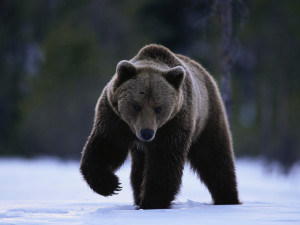Over the past decade, Cole Hamels has been one of the best pitchers in Major League Baseball. Many of his key statistics, such as strikeout and walk rates, ERA, WHIP, total wins, and innings pitched per start, compare favorably to other aces like Zack Greinke, David Price, and Jon Lester over that span. He’s a three time All-Star, a former World Series MVP, and he even threw a no-hitter in his last start with the Phillies before being traded to the Texas Rangers last July. He purposely drilled a young Bryce Harper with a pitch during Harper’s rookie season to warn the kids to stay off of his lawn. Old school! Hamels was a key player in helping the Rangers reach the postseason last year, and is one of the main reasons that his team is currently in first place in the AL West this season. His Bugs Bunny changeup has been one of the most dominant pitches in the game throughout his career. This is all fantastic, so why does it sound like there’s a “but” coming? That’s not necessarily the case. No need to be so negative. However, as great as Hamels has been, his 33rd birthday is just around the corner, and he’s thrown almost 2,200 combined regular and postseason innings throughout his MLB career. That’s a lot of wear and tear. At this point in his career, a fair question to ask would be: Is Hamels still the same dominant pitcher that he’s always been? Or is age and/or all of the wear and tear starting to catch up with him?
Let’s take a look at Hamels’ profile to determine if he’s still capable of producing at an elite level. Here are a few observations:
• He’s struggling to throw strikes. Hamels’ 37.9% Zone% (percentage of pitches thrown inside of the strike zone) is the lowest rate in MLB among qualified starting pitchers and is ten percent lower than his career rate (47.9%). His 54.3% F-Strike% (first pitch strike percentage) is the 7th lowest rate in MLB and is well under his career mark in that category as well (60.7%). It would stand to reason, then, that…
• He’s walking more hitters than ever before. Hamels’ current 3.47 BB/9 would represent a new career high and is far above his 2.35 career rate. This uncharacteristic lack of control might help to explain why…
• He’s allowing more home runs than ever before as well. His 1.63 HR/9 is the 15th highest rate among qualified SPs and would represent the worst mark of Hamels’ career. This rate is likely to come down some once his current 22.7% HR/FB stabilizes, but it’s a concerning trend. It may be at least partially due to the fact that…
• He’s throwing his changeup less often. Remember the incredible changeup that I mentioned earlier? The one that’s graded out as the best in baseball (yes, even better than King Felix’s) over the past decade? Hamels has thrown that pitch just 19% of the time in 2016, down from his 26.5% career rate. Despite this decision to feature the changeup less often, Hamels has maintained results that have been very much in line with his career averages (3.14 ERA, 8.78 K/9). He’s been somewhat fortunate thus far this season, however, due to the fact that…
• Luck has been on his side. If his current .269 BABIP holds up, it would mark the first time since 2011 that Hamels has posted a sub-.290 BABIP. His 85.9% LOB% is tied with Danny Salazar and Jon Lester for the highest rate among MLB starting pitchers, and is 8.7% higher than his career strand rate (77.2%). This good fortune is reflected in the FIP and xFIP categories, where his respective 4.98 and 3.93 marks indicate that his current ERA will inflate with neutral luck.
Bottom line: Cole Hamels has been a great pitcher for a long time, and he looks far from finished. His changeup is still a formidable offering, and his recent results indicate that he’s still capable of being a frontline starting pitcher. His strikeout and swinging strike rates show little to no drop off, and his current 52.2% ground ball rate (thanks to increased sinker and cutter usage) would represent a new career high for him. There are some chinks in the armor though. His control appears to be a bit off, and he’s allowing more homers than ever. Once his BABIP and strand rate luck neutralize, that pie (3.14 ERA) might not be quite as tasty. He should still be a solid fantasy asset moving forward, but his perceived value has likely exceeded his actual value at this point. If another owner is willing to pay full price for his name value, exploring trade possibilities might prove to be a wise decision.
Final Verdict:



